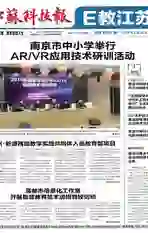SUMMARY OF THE 2018 WHITE HOUSE STATE- FEDERAL STEM EDUCATION SUMMIT
2019-09-10
Background
Focus on Science, Technology, Engineering, and Mathematics (STEM) Education, including Computer Science, is of paramount importance to America’s future workforce and is the foundation to develop the necessary skills for the jobs that will allow the United States to continue to remain the global leader in today’s competitive landscape.
The Trump Administration has prioritized STEM Education by highlighting key goals that are both transparent and achievable. By forging stronger connections for students between the worlds of education and work; focusing on innovation and entrepreneurship; integrating computer science principals; and improving access to STEM programs for all Americans, including women, minorities, persons with disabilities, and people in rural areas, the Trump Administration has underscored the importance of STEM Education to the development of the future American workforce.
The Trump Administration is committed to bettering the Nation’s STEM Education agenda, as will be reflected in the upcoming 2018-2023 Plan so that States will be well-equipped to prepare future generations for the jobs of the future.
Key Takeaways from the Summit
Forging stronger connections for students between education and work. Work-based learning for students in STEM K-20 Education, including apprenticeships, internships, cooperative education, and mentorships, is possible through the external partnerships that support school and workplace collaboration. These partnerships may involve the certification and credentialing of programs at the K-20 levels and beyond. Attendees discussed ways to unite stakeholders across communities and regions to promote STEM careers supporting economic development in the Skilled Technical Workforce sphere and beyond.
Focusing on innovation and entrepreneurship. Preparing today’s learners for the jobs of the future and empowering America’s workforce is an imperative at the forefront of the Trump Administration’s agenda. Attendees discussed strategies and methods to engage all Americans in cutting-edge programs that focus on innovative ways to encourage entrepreneurship for future generations.
Integrating Computer Science principals across the educational experience. On September 25, 2017, President Donald J. Trump signed a Presidential Memorandum directing Secretary of Education Betsy DeVos to allocate at least $200 million to STEM Education and Computer Science programs. Attendees discussed how to integrate Computer Science education into classrooms across the Nation to better prepare today’s learners for the jobs of tomorrow.
Improving access of STEM programs for all Americans. STEM Education is inclusive. By working to improve access to STEM programs for underrepresented and underserved groups, America can close the labor gap that persists between good jobs and qualified workers. We must ensure that all of today’s learners, from curious Kindergartners to re-skilling retirees, have access to high-quality STEM and Computer Science courses. Attendees discussed opportunities to harness the talent and full potential of students, educators, and advocates by prioritizing high-quality educational programs and relevant postsecondary education to achieve goals and turn dreams into realities.
Next Steps and Conclusion
In accordance with the America COMPETES Reauthorization Act of 2010, the 2018-2023 Plan will provide the strategy for implementing STEM Education across the United States. This plan will provide short and long term goals, and specify the approaches Federal agencies will use to validate and ensure the efficacy of their respective STEM Education programs. This plan will support Americans preparing for jobs of the future and advance innovative job training programs.
The Trump Administration will continue to advocate for STEM Education across the Nation and looks forward to continuing collaboration with stakeholders to ensure the United States remains the world leader in science, technology, engineering, mathematics, and to ensure economic prosperity for generations to come.
譯文
背景
专注于科学、技术、工程和数学(即STEM)教育,包括计算机科学,对美国未来的劳动力来说是至关重要的,也是发展必要技能的基础,这些技能将使美国在当今竞争环境中继续保持全球领先地位。
特朗普政府通过强调透明和可实现的关键目标,将STEM教育列为优先事项。通过在教育和工作领域为学生建立更牢固的联系,注重创新和创业,将计算机科学整合到STEM教育中以及改善包括妇女、少数民族、残疾人和农村地区居民等范围的所有美国人的STEM计划,特朗普政府强调了STEM教育对未来美国劳动力发展的重要性。
特朗普政府致力于改善国家的STEM教育议程,这将反映在即将出台的2018—2023年计划中,从而使几代人为未来的工作做好充分的准备。
峰会的四个重点
●在教育和工作之间建立更牢固的联系
学校、工作场所以及更广泛的社区之间的协作支持,为K-20阶段的学生提供了基于工作的学习,包括学徒、实习、联合培养等。这些协作关系可能涉及K-20及以上级别项目的认证。与会者讨论了如何团结社区和地区的利益相关者、增进STEM职业教育以及支持技术劳动领域和其他领域的经济发展。
●注重创新和创业
在特朗普政府的议程中,当务之急是让今天的学习者为未来的工作做好准备,并增强美国劳动力的能力。与会者讨论了让所有美国人参与尖端项目的战略和方法,这些项目侧重于通过创新的方式鼓励后代创业。
●将计算机科学整合到STEM教育中
2017年9月25日,特朗普总统签署了一份总统备忘录,向STEM教育和计算机科学教育每年拨款至少2亿美元。与会者讨论了如何将计算机科学教育整合到全国的教室中,以便让今天的学生更好地为未来的工作做好准备。
●改善所有美国人的STEM计划
STEM教育具有包容性。通过努力改善就业机会不足和服务不足的群体获得STEM项目的机会,美国可以缩小好工作和合格工人之间持续存在的劳动力差距。我们必须确保今天所有的学习者,从好奇摸索的幼儿园学习者到重新掌握技能的退休人员,都可以获得高质量的STEM和计算机科学课程。与会者讨论了利用学生、教育者和倡导者的天赋和全部潜力的机会,将高质量的教育项目和相关的高等教育列为优先事项,以实现目标,将梦想变成现实。
下一步举措以及结论
根据2010年的《美国竞争再授权法案》,2018—2023年计划将提供在全美实施STEM教育的战略。该计划将提供短期和长期目标,并明确联邦机构将使用哪些方法来验证和确保各自STEM教育项目的有效性。同时,该计划将支持美国人为未来的工作做好准备,并推进创新的工作培训项目。
特朗普政府将继续在全国范围内倡导STEM教育,并期待继续与利益攸关方合作,以确保美国在科学、技术、工程、数学领域保持世界领先地位,确保未来几代人的经济繁荣。
